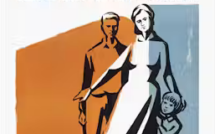

In this section of Campus, EuropeNow features a selection of scholarly articles and books on topics pertinent to the teaching of Europe or teaching in Europe that were published within the last 5 years. This dynamic bibliography, with bimonthly installments, seeks to highlight both pedagogy research and critical analyses of debates taking place in higher education in and about Europe.
1. Engaged Urban Pedagogy: Participatory Practices in Planning and Place-Making
Edited by Lucy Natarajan and Michael Short
At University College London Press
Abstract: Engaged Urban Pedagogy presents a participatory approach to teaching built environment subjects by exploring 12 examples of real-world engagement in urban planning involving people within and beyond the university. Starting with curriculum review, course content is analysed in light of urban pasts, race, queer identity, lived experiences and concerns of urban professionals. Case studies then shift to focus on techniques for participatory critical pedagogy, including expanding the ‘classroom’ with links to live place-making processes, connections made through digital co-design exercises and student-led podcasting assignments. Finally, the book turns to activities beyond formal university teaching, such as where school-age children learn about their own participation in urban processes alongside university students and researchers. The last cases show how academics have enabled co-production in local urban developments, trained community co-researchers and acted as part of a city-to-city learning network. Throughout the book, editorial commentary highlights how these activities are a critical source of support for higher education.
2. Urban Design Education For Placemaking: Learning From Experimental Educational Projects
By Jelena Živković1, Zoran Đukanović2, and Uroš Radosavljević
In Keeping Up with Technologies to Create the Cognitive City
Abstract: Placemaking is a people-centred, multi-faceted approach which aims at strengthening connections between people and the places they share as a basis for sustainable urban development. It creates a new context for urban design practice, a context in which urban designers should value the lay knowledge of “ordinary people” (who are considered to be place-makers too); should recognise the importance of both cognitive and emotional connections between people and spaces for creating a sense of place; and should participate as partners in a collaborative process of making a place. Traditional studio-based urban design education, featuring solipsistic, elite, and abstract design practices, proves to be inadequate in relation to the placemaking paradigm of urban development. In search for a new approach, we argue that for urban design education to be relevant for the placemaking practice, it should broaden its basis to include not only gaining knowledge and developing skills in urban design, but also valuable site-specific and community-based learning experiences aimed at developing cognitive and emotional connections between people and spaces so as to produce a sense of place and a sense of sharing a place.
3. Reimagining Place Through the Sandbox Studio Pedagogy: An Introduction
By Iderlina Mateo-Babiano and Kelum Palipane
In Placemaking Sandbox: Emergent Approaches, Techniques and Practices to Create More Thriving Places
Abstract: This book shares several case studies on Placemaking Sandbox Studio, specifically on how to engage students and individuals who are interested in teaching placemaking to apply the different approaches that would shape and create thriving public spaces. It tackles a unique, little-researched topic on the pedagogy of place and placemaking, thereby bridging the gap between academia and practice. This introductory chapter begins with a discussion on the increasing awareness of the strategic importance of public space in the development agenda to address key global challenges. Although society has already gained deeper understanding of urbanisation, globalisation, and the challenges that accompany these phenomena, we still have very limited understanding of the diversifying publics and of the strategies in place that either gives privileges or marginalises certain sectors of society. In other words, we do not understand who we are designing for. We argue that this is inexorably intertwined with the need to improve how place and placemaking are being taught in the academe. The chapter then situates placemaking pedagogy within a studio model, as approached in the case studies featured in this book. It concludes with an outline of the chapters and a call to adopt the Sandbox Studio as an approach in place-based and placemaking pedagogy.
4. Placemaking for the Civic University: Interface Sites as Spaces of Tension and Translation
By Julia Udall and Anna Wakeford Holder
In Reframing the Civic University. Rethinking University-Community Policy Connections
Abstract: This chapter examines the role of place within the developing civic agenda for universities, focusing on ‘interface sites’: places where institutional resources, structures and employees come together with civic stakeholders and communities, to engage in shared concerns through programmes of research, teaching and knowledge exchange. It explores three case studies: an urban room, a law clinic, and a natureculture lab. These build on historic precedents, but extend and refine them in relation to their institutional and civic context and aims. These sites are interesting to consider in relation to placemaking because they must function for diverse publics and hybrid programmes, and are continually recalibrated and reconfigured to support emerging relationships and activity. The chapter argues that their scale and necessary responsiveness allows for crucial feedback that not only results in better spaces in relation to their particular civic agenda, but also can support wider institutional learning in ways that can transform the university. It considers how places may be produced in ways that enable civic activity to flourish. The reason for this is to establish a civic agenda not as something a university ‘does’ to place, but rather something that must emerge in collaboration, changing the university as much as it changes the world ‘outside’.
5. Building Participatory Counternarratives: Pedagogical Interventions Through Digital Placemaking
By Jordan Frith and Jacob Richter
In Convergence: The International Journal of Research into New Media Technologies
Abstract: Places are filled with stories, with histories that shape how people understand the nature of a place. Places are unique sets of trajectories – each with a story – coming into contact. However, just as much as places are defined by their histories, they are also shaped by the histories that are forgotten, or far too often, actively suppressed through dominant narratives. After all, dominant media of spatial, public memory – for example, plaques and public monuments – often reproduce dominant narratives of a place, narratives created by the powerful. This project examines how digital placemaking can be deployed through locative technologies to push back on dominant spatial narratives and make places more polyvocal in consequential ways. In particular, through a project at Clemson University, we examine how locative storytelling applications can help students intervene in traditional narratives of place to engage with social justice and alternative histories.
Photo: Shutterstock | University of Warsaw library.
Published on June 17, 2024.




